Choose your location wisely. Once planted, that olive tree will be there forever.
Olive trees can live for hundreds and even thousands of years under the right conditions.
- Average lifespan: 300–600 years
- With care: Some trees live over 1,000 years
- Oldest known trees: A few in the Mediterranean are estimated to be 2,000 to 3,000 years old, like the Olive tree of Vouves in Crete.
Olive trees grow slowly and produce fruit for centuries, especially when pruned and cared for (maybe even by your descendants).
The root system can regenerate new growth even if the trunk dies back. What a tree! No wonder The Mount of Olives is such a special place.
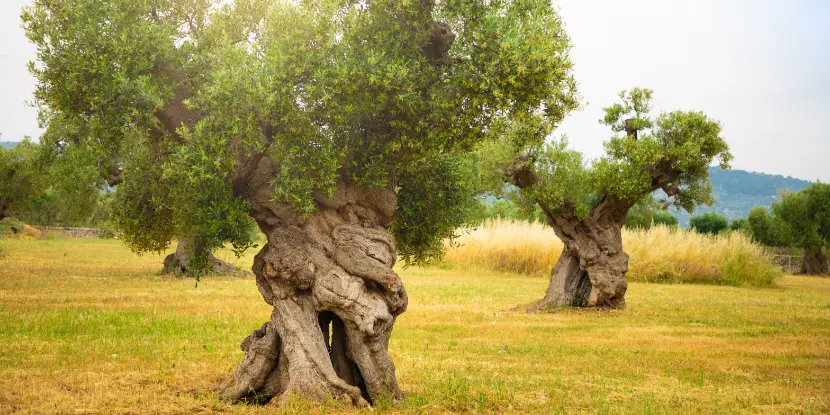
Old olive trees in an Italian grove.
Origins of the Olive Tree
Olive trees (Olea europaea) have been cultivated in the Mediterranean for over 6,000 years for their oil, fruit, and wood.
The plant is an ancient symbol of peace, prosperity, and endurance. It’s drought-tolerant and incredibly resilient, well-suited for arid conditions like those of the American Southwest. Some trees in the Mediterranean still bear fruit after more than 1,000 years.
Spanish missionaries introduced olive trees to California in the late 18th century. These trees were part of the mission system, with the first plantings occurring around 1769 at Mission San Diego de Alcalá.
Olives were grown primarily for their oil, which was essential for cooking, lighting, and religious ceremony. Over time, olive cultivation spread throughout the state, and today, California remains a leading producer of olives and olive oil in the USA.
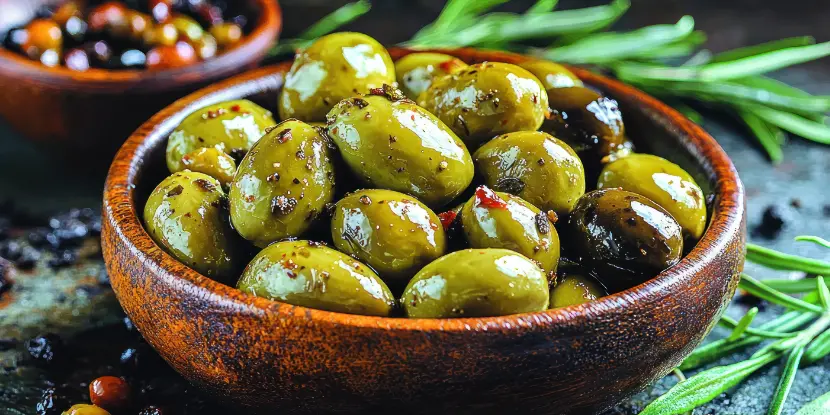
Cured and seasoned olives in a clay bowl.
Best Varieties for Fruit
These are some of the best fruiting varieties for the American Southwest:
- Arbequina: An adaptable, compact Spanish variety that produces a high yield of small, flavorful fruits.
- Mission: Originally developed in California, Mission olives are prized for oil and curing into table olives.
- Manzanillo: This Spanish variety thrives in desert climates and offers large, delicious fruit.
- Frantoio: A classic Italian variety, Frantoio is excellent for oil production and flourishes in warm, sunny environments.
Choose a variety that matches your primary goal (oil, table fruit, or ornamental) and ensure the tree is adapted to the region’s climate.
Optimal Growing Conditions
Light
- Olive trees require at least 6–8 hours of full sunlight light daily.
- They do best in open spaces where they won’t have to compete for sunlight with other taller plants or structures.
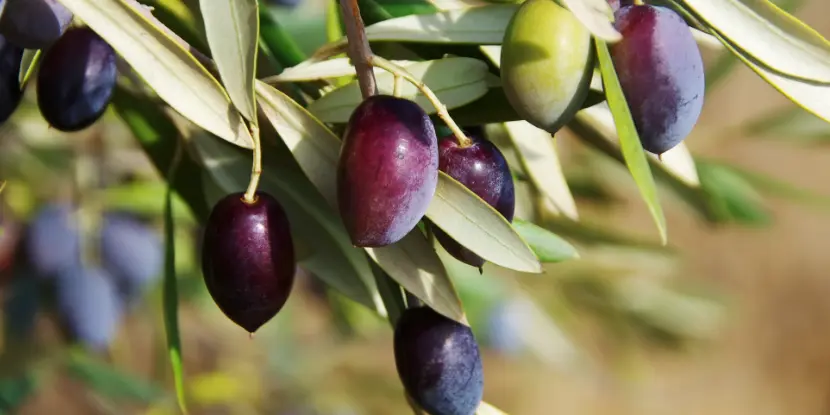
Olives ripening on the tree.
Soil
- Well-draining soil is critical to prevent root rot.
- Sandy or loamy soils with a neutral to slightly alkaline pH (6.5–8.5) are ideal.
- Avoid heavy clay soils unless you amend them with sand or organic materials to improve drainage.
Temperature
- Olive trees are heat-tolerant but not freeze-proof.
- They prefer temperatures between 60°F and 85°F and can withstand short periods of extreme heat.
- For colder areas in the Southwest, choose frost-resistant varieties like Arbequina or Mission, and be prepared to protect young trees during freezes.
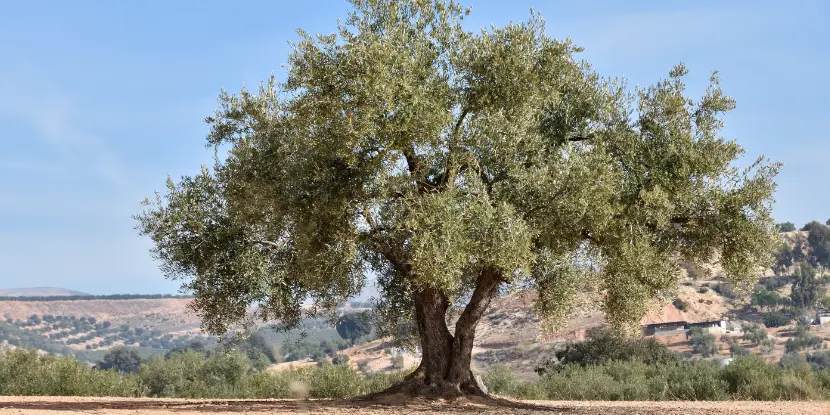
A lonely olive tree stands by the roadside.
Propagating Olive Trees
Cuttings
- Take a hardwood cutting 6–8 inches long from a healthy tree in early spring or late summer.
- Dip the cut end in rooting hormone and plant it in a well-draining potting mix.
- Keep the soil moist and the cutting in a warm, sunny location until roots develop (2–3 months).
Seed Propagation
- Extract seeds from fresh, ripe olives and soak them in water for 24–48 hours.
- Plant the seeds in a seed-starting mix and keep the soil moist.
- Bear in mind that olive trees grown from seeds may take a decade or more to produce fruit.
Planting Your Olive Tree
- Pick a spot with plenty of sunlight and good air circulation.
- Dig a hole twice the width of the tree’s root ball and as deep as the container it came in.
- Remove the tree from its container and gently tease apart any encircling roots.
- Place it in the hole at the same depth it grew in its container.
- Fill the hole with a mix of native soil and organic compost, then water thoroughly to settle the soil around the roots.
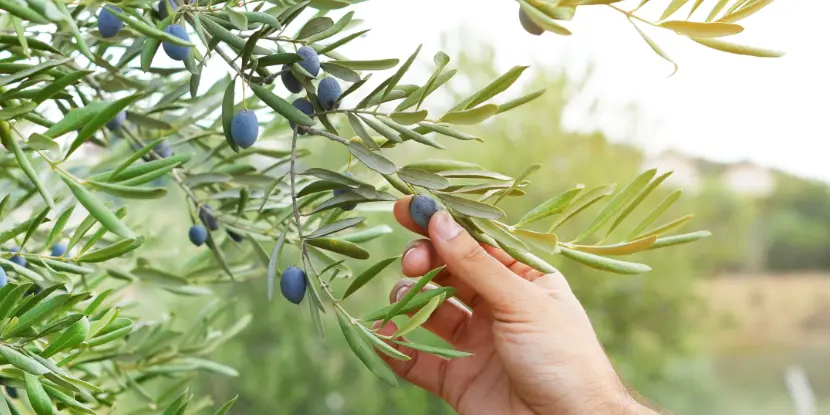
You can handpick olives or strip them from the branches.
Olive Tree Care
Water
- Although olive trees are drought-tolerant, they should be established with regular watering, especially during the first year.
- Water deeply every 7–10 days during the growing season; reduce frequency once established.
Fertilizer
- Olive trees are light feeders.
- Apply a balanced fertilizer, like a 10-10-10 formula, twice a year (spring and fall).
- Avoid over-fertilizing. Too much nitrogen can reduce fruit production.
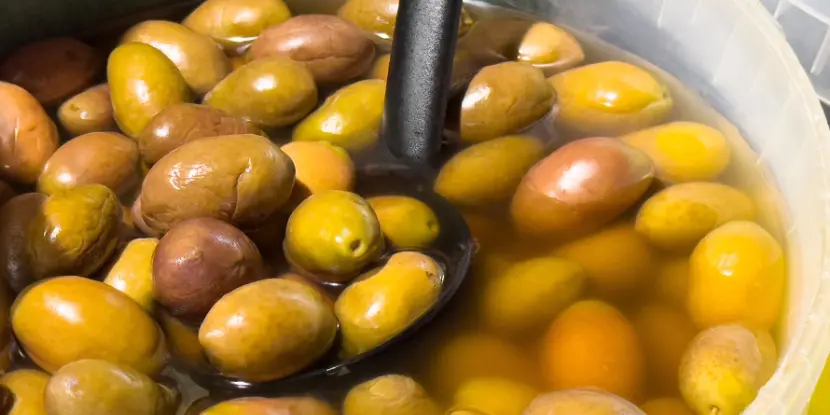
Green olives curing in brine.
Pests & Diseases
- Scale insects and aphids can damage leaves. Use horticultural oils or insecticidal soap for treatment.
- Verticillium wilt is a fungal disease that causes leaf yellowing and wilting. Avoid overwatering and plant in well-draining soil to prevent this.
Pruning
- Light pruning can shape the tree and promote air circulation.
- Prune in late winter or early spring before new growth appears.

You can handpick olives or strip them from the branches.
Harvesting
- Olives are ready for harvest when they turn from green to purple-black. This is typically in late fall or early winter.
- Handpick or use a ladder and comb-like rake to strip olives from the branches.
- For green olives, harvest when they reach their full size but before ripening.
- For oil, wait until the fruit turns black or deep purple for maximum yield.
- Store harvested olives in a cool, dark place for a few weeks. Allow them to fully ripen before consuming or processing into olive oil.
Processing Olives
Freshly harvested olives are naturally bitter and require curing. Popular curing methods include:
- Brine curing for flavorful table olives.
- Dry curing for wrinkly, intensely flavored olives.
- Pressing to extract olive oil. Home pressing is possible with small-scale olive presses.
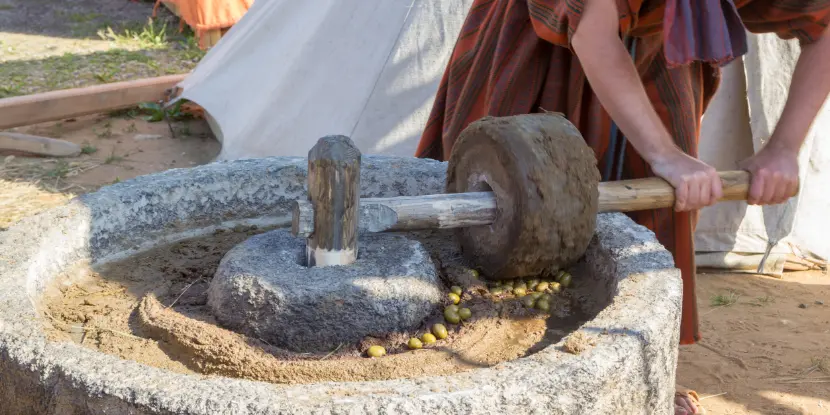
A woman uses a traditional olive press to make oil.
FAQs: Olive Tree Care
Q: Can olive trees survive in drought conditions?
Yes! Olive trees are exceptionally drought-tolerant once established.
Q: How often should I water my olive tree?
Water young trees weekly. Mature trees need water every 10–14 days in dry periods.
Q: Can olive trees grow in pots?
Smaller varieties like Arbequina thrive in containers.
Q: How long does it take for an olive tree to bear fruit?
On average, 3–5 years.
Q: Do olive trees need pruning every year?
Yes, annual pruning maintains shape and promotes healthy growth.
Q: Can olive trees handle Southwest winters?
Most can survive mild freezes, but frost protection is recommended in colder regions.
Q: Are olive trees messy in landscapes?
Fruit-drop can be messy, but some non-fruiting ornamental varieties are available.

